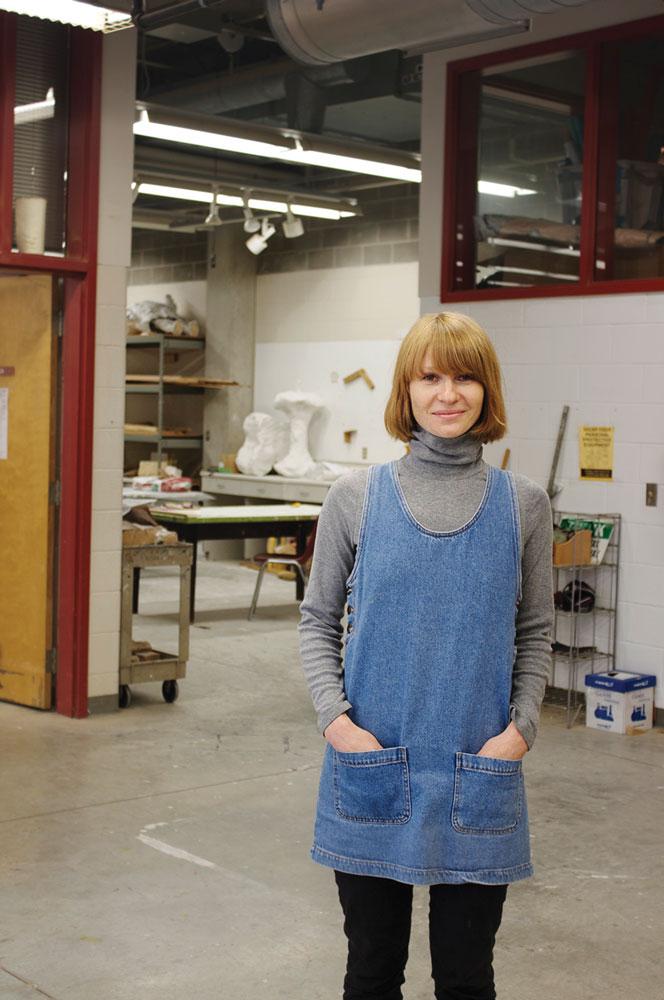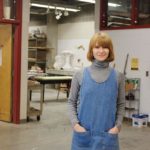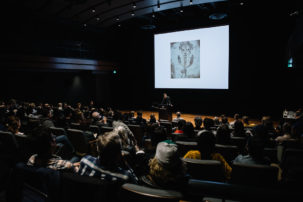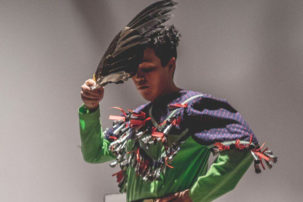Contrasting vinyl’s slick surface with its throwaway connotations, Jazvac once covered a 1998 Pontiac Sunfire in Porsche designs. Her later, more abstract works riff on similar tensions between privileged symbols and pop materials, creating, as critic Vanessa Nicholas put it in a 2010 review for canadianart.ca, “textured, minimal objects that seduce the viewer with their glossy shine.”
Jazvac’s sculptures and installations have been exhibited nationally and internationally, including recent projects at Louis B. James Gallery, Museum London, Nuit Blanche and Diaz Contemporary. She is based in London, Ontario, where she is an assistant professor at the University of Western Ontario.
Jazvac’s sensitivity to the potential in overlooked and everyday objects is something she encourages art students to develop as well.
“When I teach sculpture and installation,” she says, “I like to think about it as a practice that addresses the way objects and human bodies coexist in the world. When you consider it this way, the medium becomes endlessly broad, as well as highly relevant to contemporary life.”
According to Jazvac, taking this perspective can change the way you see even the most mundane activities.
“After studying sculpture, everyday actions like getting dressed in the morning, arranging furniture in a room, shopping or making anything with your hands become sculptural concerns, potentially loaded with social, political and historical meaning.”
For developing artists, she says, it’s important to pinpoint personal motivation, and to learn by doing.
“My goal is to get students thinking about objects of interest to them in their own lives,” she concludes. “How they are made, with what materials, who makes them, under what conditions and where those objects will end up in the environment. Experimenting by making things is the best way to develop critical analysis. In a sculpture program, thinking and making go hand-in-hand.”
Created with files from Canadian Art‘s Winter 2012 edition and canadianart.ca










